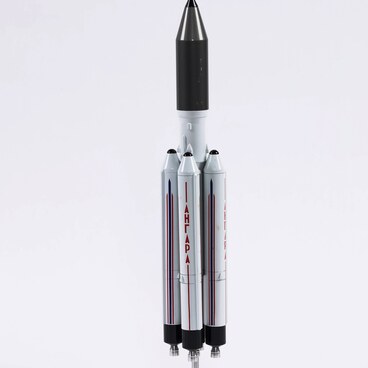This belt was used for medical monitoring on board the Soyuz-T spacecraft and the Soyuz-6 space station during Victor Savinikh’s flight in 1981. Sewn into the belt are electrodes and sensors to monitor the wearer’s breathing rate and pulse and record any changes in these parameters. The electrodes were fastened to the wearer’s underwear and body harnesses using a thin screw soldered to the electrode. To ensure that the silver disks exerted a constant pressure on the wearer’s skin, a piece of porous foam or a rubber pad was attached to the electrode, and to pieces of rubber set into the belt. The sensors were firmly attached to the cosmonaut’s body using a special paste. Two sensors were used to record the wearer’s breathing, a carbon sensor and a contact sensor. The carbon sensor measured the variations in the perimeter of the wearer’s rib cage as they breathed, and the contact sensor recorded the breathing rate. To record the heartbeat a special sensor was used, consisting of an electrodynamic microphone with a membrane that was in direct contact with the chest. The sensor’s circuitry generated an alternating current, which corresponded in strength to the movements of the chest, and the current was fed into the electrocardiographic amplifier and then the remote-sensing system. This device allowed the physiological data for all crew members to be recorded simultaneously, even if they were in different parts of the station. The data was transferred without them having to stop what they were doing. These physiological measurements were taken regularly (once every few days) after the cosmonauts had done a specified amount of physical activity and then sent back to Earth. While they worked on the Salyut-6 space station the cosmonauts took part in a number of medical and biological experiments conducted in order to study the reaction of the human body to protracted periods in zero-gravity conditions.
This space medical belt was designed to monitor the functioning of the cosmonaut’s heart and his breathing. It was given to the museum in 1988 by Anatoly Dzyuba, a friend of Victor Savinikh who served as Mayor of Kirov in the 1980s.
This space medical belt was designed to monitor the functioning of the cosmonaut’s heart and his breathing. It was given to the museum in 1988 by Anatoly Dzyuba, a friend of Victor Savinikh who served as Mayor of Kirov in the 1980s.



